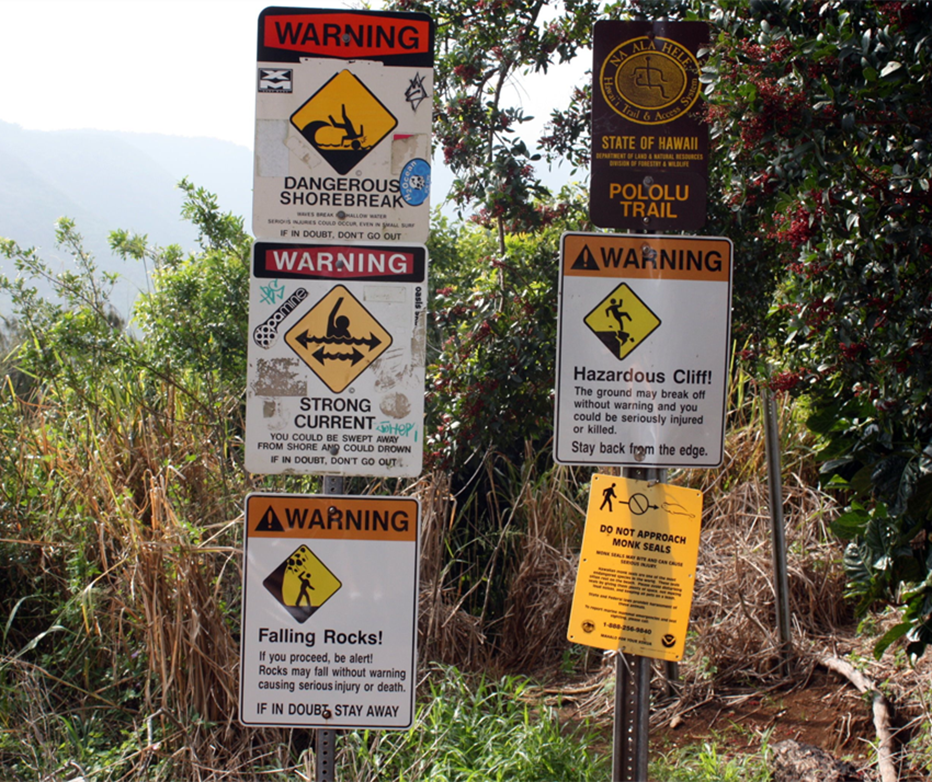When to sign
When marking trails, there are several situations where signage is required. Reasons for why a sign may be required include the following:
Decision Points
Decision points are any place on the route where the trail user is faced with one or more options of direction. The decision point is usually where a trail splits and the user needs to know which option will keep them on the Trans Canada Trail. In some situations, there may be more than one option to remain on the Trans Canada Trail. An example of this would be where the trail splits from the through-trail into a local loop or spur.
Reassurance
Reassurance signs are required along all trail segments. They are used to brand the trail and advise trail users that they are still travelling on a segment of the Trans Canada Trail.
Regulation Changes
Since every local trail group manages the rules and regulations for their own trail, when responsibility passes from one local body to the next, it may be required to indicate any changes. An example of a regulatory change is where a segment of trail crosses from a local trail that allows snowmobile use, to one that does not.
Always consult local authorities during your planning stage to discover this information. It is recommended that you start with your municipality to get direction on who best can answer your question.
Provincial transportation departments often provide an overview of what is traditionally used on roadways and highways. For examples, here are the links to the Ontario Ministry of Transportation Traffic Manual and the Accessibility for Ontarians with Disabilities Act.
When not to sign
While it is less common to over-sign an area than to under-sign, sometime an excess of signage can cause confusion or redundancy. For example, on a segment of trail where no deviation occurs, directional indicators (beyond a reassurance sign) are not necessary.
Likewise, providing a reassurance sign immediately after a decision point is redundant. If the decision point is properly marked, it replaces the reassurance sign.
Signage pollution
Signage pollution is the term used for excessive signage that clutters a trail. Signage pollution is problematic for several reasons:
- An excess of unnecessary signage increases the likelihood of an important sign being missed.
- Extra signage increases both the initial cost and the maintenance costs of signing a trail.
- Excessive signage can detract from the natural beauty of the trail.
To prevent signage pollution, ask yourself the following questions for the segment of trail you are signing:
- Which signs are necessary?
- Can the number of signs be reduced without affecting usability?
- Can any of the signs be consolidated?
For example, on a straight stretch of trail, choosing a larger sign (e.g., a 12×12 inch) instead of a smaller sign (e.g., 6×6 inch) will increase the visible distance, allowing you to place signs farther apart and therefore reducing the number of signs required.

Look for opportunities on your trail to consolidate messages.





